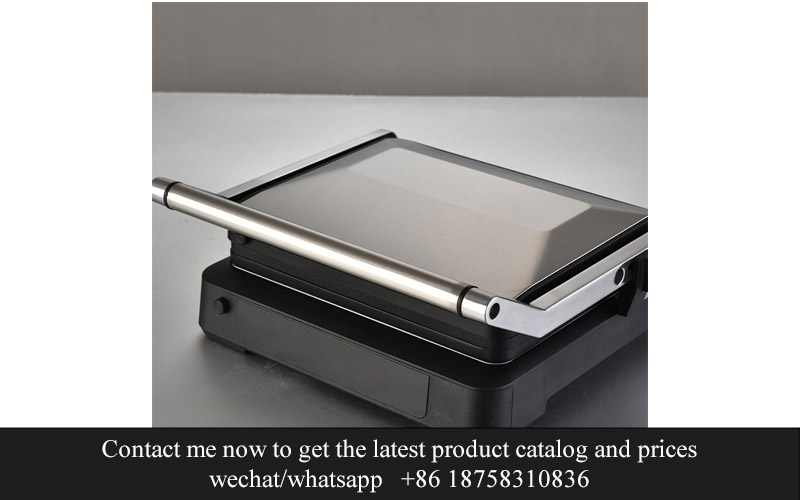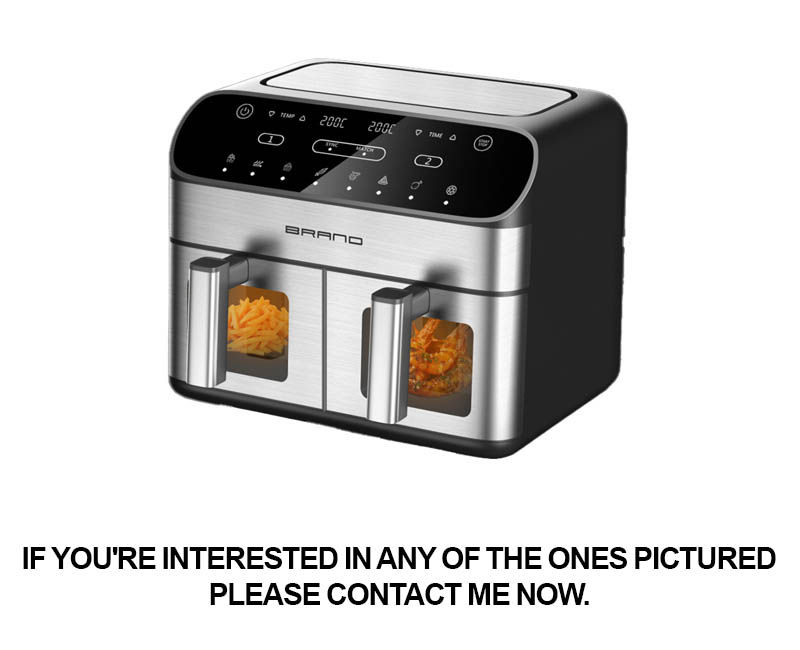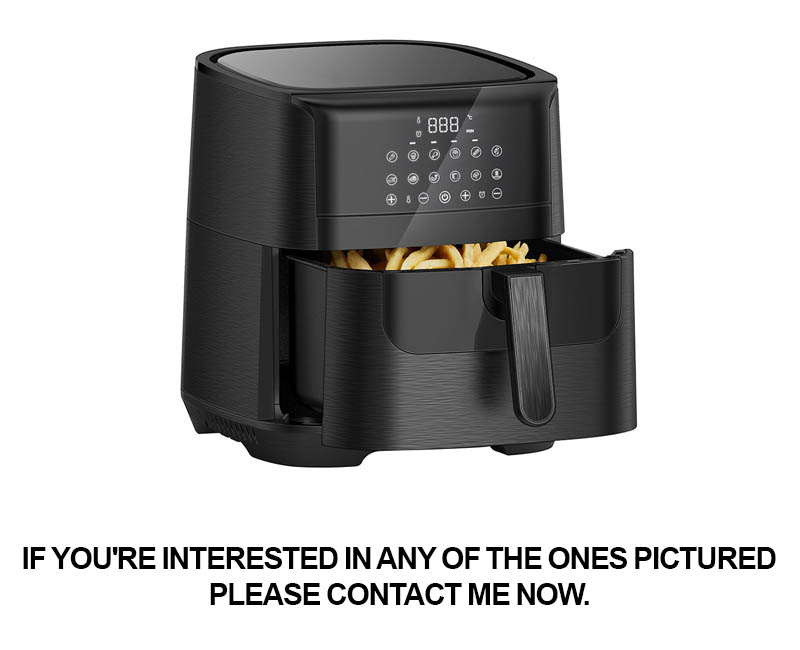Address
304 North Cardinal
St. Dorchester Center, MA 02124
Work Hours
Monday to Friday: 7AM - 7PM
Weekend: 10AM - 5PM
Address
304 North Cardinal
St. Dorchester Center, MA 02124
Work Hours
Monday to Friday: 7AM - 7PM
Weekend: 10AM - 5PM

In recent years, the evolution of sandwich grill plants has brought about a transformation in the food service industry. As these innovative facilities continue to rise, their impact on both speed and quality is undeniable. This article delves into the intricacies of continuous operation sandwich grill plants, exploring their mechanics, market insights, and the challenges they face. Furthermore, it peeks into the future prospects and predictions for these dynamic entities, showcasing how they are poised to shape the culinary landscape.
In recent years, the culinary landscape has witnessed a remarkable transformation with the rise of continuous operation sandwich grill plants. These innovative facilities have become the new norm in the fast-casual industry, offering a seamless and efficient way to produce fresh, high-quality sandwiches at a rapid pace. The surge in popularity of these plants can be attributed to several key factors that have revolutionized the way we think about fast food.
These plants are designed with a focus on efficiency and speed, ensuring that sandwiches are produced and served in a continuous flow. The process begins with a steady supply of fresh ingredients, which are then expertly crafted into mouth-watering sandwiches on the high-speed grills. The technology behind these grills is nothing short of impressive, with automated feeding systems that keep the production line running smoothly without a break.
The demand for fast and convenient food options has skyrocketed, particularly among busy professionals and students. Continuous operation sandwich grill plants have capitalized on this trend by offering a solution that satisfies the need for quick service without compromising on quality. These plants are strategically located in high-traffic areas, such as shopping centers and universities, making them easily accessible to a wide customer base.
One of the standout features of these plants is their ability to maintain consistency in the sandwich-making process. The use of automated systems ensures that every sandwich is cooked to perfection, with the same level of seasoning and texture. This consistency has become a crucial selling point in an industry where customers are increasingly looking for reliable and high-quality food options.
The technology used in continuous operation sandwich grill plants is not just limited to the grills themselves. The entire production process is streamlined, from the storage and preparation of ingredients to the packaging and delivery of the final product. This integration of technology has significantly reduced the time it takes to produce a sandwich, allowing for a much faster service speed.
In terms of innovation, continuous operation sandwich grill plants have pushed the boundaries of what is possible in the fast-food sector. Some plants have introduced modular designs that allow for easy expansion and customization. Others have integrated eco-friendly features, such as energy-efficient appliances and sustainable materials, to appeal to environmentally conscious consumers.
Success stories from around the globe are testament to the impact of continuous operation sandwich grill plants. From bustling city centers to busy airport terminals, these facilities have become a staple in the food service industry. They have not only created new job opportunities but also provided a new dimension to the traditional fast-food experience.
However, the success of these plants doesn’t come without its challenges. Maintaining quality control while operating at high speeds requires precise management and attention to detail. Staff training and the implementation of robust safety protocols are essential to ensure that the production line runs smoothly and safely.
Looking ahead, the future of continuous operation sandwich grill plants looks bright. As technology continues to evolve, we can expect to see even more sophisticated systems that further enhance the speed and efficiency of sandwich production. Predictions suggest that these plants will become even more integrated into the food service industry, offering a diverse range of sandwich options that cater to a variety of tastes and preferences.
The rise of continuous operation sandwich grill plants is a testament to the ever-evolving nature of the food industry. By embracing innovation and technology, these plants have not only redefined the fast-food experience but also set a new standard for efficiency and quality. As consumers continue to seek out quick, convenient, and delicious meal options, it’s clear that continuous operation sandwich grill plants are here to stay.

In the fast-paced world of food service, the concept of continuous operation sandwich grill plants has emerged as a game-changer. These facilities are designed to operate seamlessly, producing sandwiches at a relentless pace to meet the ever-growing demand for quick and fresh meals. The mechanics behind these plants are both intricate and efficient, ensuring that every aspect of the process is optimized for speed and quality.
The heart of a continuous operation sandwich grill plant lies in its conveyor belt system. These belts are meticulously designed to guide raw ingredients through the entire cooking process, from the raw meat being seasoned and placed on the grill to the finished sandwich being sliced and packaged. The precision of these belts is crucial, as they must maintain a consistent flow without causing any delays or misalignments.
Once the raw ingredients are on the belt, they undergo a series of steps that are carefully choreographed to ensure each sandwich is cooked to perfection. Automated systems handle the application of condiments and toppings, which are dispensed at precise intervals to prevent over-saturation or under-coating. This automated consistency is a stark contrast to the more variable results found in traditional sandwich-making methods.
The grills themselves are the beating heart of these plants. They are designed for high-heat, continuous operation, often capable of cooking multiple sandwiches at once. The grills are typically equipped with heat sensors to maintain a consistent temperature, crucial for achieving the perfect char on the bread and the perfect doneness on the meat. The design of these grills also allows for quick and easy cleaning, which is essential for maintaining hygiene in a high-volume environment.
In many cases, the process begins with the slicing of fresh ingredients. Automated slicers ensure that each piece of lettuce, tomato, and cheese is uniformly cut, which not only looks appealing but also ensures that each sandwich has the right amount of topping. This level of precision is difficult to achieve by hand, especially when producing thousands of sandwiches daily.
The integration of software and technology is another key component of these continuous operation plants. Advanced control systems monitor the entire process, adjusting the conveyor belt speed, grill temperature, and topping application in real-time. This ensures that each sandwich is produced to the exact specifications set by the operators, allowing for a high degree of control over the final product.
One of the most remarkable aspects of these plants is their ability to handle high volumes without compromising on quality. The continuous nature of the operation means that there is little to no down time, allowing for a steady stream of sandwiches to be produced. This not only satisfies the customer’s need for speed but also maximizes the plant’s output and profitability.
The hygiene aspect is also paramount in these plants. With the potential for handling large quantities of food, sanitation is a top priority. Automated cleaning systems are often integrated into the design, allowing for thorough cleaning and sanitizing between batches. This reduces the risk of cross-contamination and ensures that the food being served is safe and clean.
Moreover, the design of these plants often includes modular components that can be easily replaced or upgraded. This flexibility allows for the plant to adapt to changing market trends and consumer preferences. For example, if a new type of meat or a trendy sauce becomes popular, the plant can be quickly modified to include these new elements without a significant downtime.
In conclusion, the mechanics behind continuous operation sandwich grill plants are a marvel of modern engineering. They combine precision machinery, automated systems, and advanced technology to produce large quantities of high-quality sandwiches with minimal human intervention. As the demand for fast food continues to grow, these plants are poised to play a pivotal role in the food service industry, ensuring that consumers can enjoy their favorite sandwiches with ease and efficiency.

In the ever-evolving landscape of the foodservice industry, continuous operation sandwich grill plants have emerged as a significant trend. This shift is driven by a variety of factors, each contributing to the rise of these innovative facilities.
The demand for fast and convenient meals has surged, particularly among busy consumers who seek high-quality sandwiches in a fraction of the time traditional methods require. This rapid service expectation has pushed sandwich shops and fast-casual restaurants to adopt more efficient production systems, with continuous operation sandwich grill plants leading the charge.
These plants are designed to churn out sandwiches at a high volume with minimal downtime. The technology behind them is sophisticated, featuring automated systems that ensure a steady flow of ingredients through the production line. From bread slicing to meat and cheese delivery, each step is meticulously timed to maintain a seamless operation.
One of the most notable trends is the emphasis on freshness and quality. Consumers are increasingly seeking healthier options and are less tolerant of long wait times. Continuous operation sandwich grill plants address these concerns by providing a consistent supply of freshly prepared sandwiches, reducing the risk of food spoilage and ensuring that every sandwich meets the same high standards.
The integration of digital technology has also played a pivotal role in the success of these plants. Data analytics and predictive maintenance are used to optimize operations, predict demand, and minimize equipment failures. This not only improves efficiency but also enhances the customer experience by reducing wait times.
Another trend is the customization of sandwiches. While speed is crucial, customers still value the ability to customize their meals. Continuous operation sandwich grill plants have adapted by incorporating modular systems that allow for a variety of toppings and condiments to be added quickly and accurately.
The market for these plants is also being influenced by the growth of the food truck and mobile catering sectors. These mobile operations often lack the space for traditional kitchen setups and benefit greatly from the compact and efficient design of continuous operation sandwich grill plants.
Globalization has also had an impact, with international brands looking to expand their reach. These brands are increasingly considering continuous operation sandwich grill plants as a way to maintain consistent quality across multiple locations, regardless of the local market’s size or demand.
The sustainability movement is another force shaping the market. Continuous operation plants are often designed with energy-efficient equipment and sustainable materials, appealing to consumers and businesses alike who are environmentally conscious.
Lastly, the rise of food delivery services has created a new challenge and opportunity. Continuous operation sandwich grill plants are well-suited to meet the demands of delivery, as they can produce large quantities of sandwiches quickly and efficiently, ensuring that orders are delivered hot and fresh.
In summary, the market for continuous operation sandwich grill plants is driven by the need for speed, quality, customization, and sustainability. As consumer preferences continue to evolve, these plants are likely to become an even more integral part of the foodservice industry’s future.

In recent years, the sandwich grill industry has seen a surge in innovation, with designers and engineers pushing the boundaries of what’s possible in sandwich preparation. These advancements not only enhance the efficiency of sandwich production but also elevate the taste and quality of the final product. Here’s a look at some of the key innovations shaping the landscape of sandwich grill design.
Grill Technology UpgradesModern sandwich grills are now equipped with advanced heating elements that provide precise temperature control, ensuring consistent grilling results every time. These elements can often be adjusted to cater to different types of bread and fillings, allowing for a tailored cooking experience.
Automated Feed SystemsThe introduction of automated feed systems has been a game-changer for sandwich production. These systems can handle the loading of bread, fillings, and condiments, significantly reducing the need for manual labor and speeding up the grilling process. The technology often includes sensors that detect when the sandwich is ready to be cooked, further streamlining the operation.
Smart Temperature ControlWith the integration of smart technology, sandwich grills can now maintain optimal cooking temperatures without constant manual adjustments. This not only ensures that sandwiches are cooked to perfection but also conserves energy and reduces waste.
Customizable Grilling PlatesGrilling plates have evolved to offer more customization options. Some models now feature plates with different surfaces, such as non-stick, grooved, or textured designs, to enhance the texture and appearance of the sandwiches. This allows for a variety of cooking styles, from crispy to soft, depending on the desired outcome.
Improved Heat DistributionOne of the challenges with traditional grills has been uneven heat distribution, which can lead to soggy bread or unevenly cooked fillings. Newer designs address this issue with more even heat distribution, thanks to improved convection and radiant heating systems. This results in a more consistent and appealing final product.
Eco-Friendly MaterialsAs sustainability becomes a more significant concern, sandwich grill manufacturers are focusing on eco-friendly materials. Grills are now made with recyclable or biodegradable materials, and some models are even designed to minimize energy consumption, reducing the carbon footprint of sandwich shops.
Interactive User InterfacesModern sandwich grills often come with user-friendly interfaces that allow operators to easily adjust settings and monitor the cooking process. Touchscreens and digital displays provide clear visuals and real-time feedback, making it simpler to manage multiple grills simultaneously.
Integrated Waste ManagementInnovation isn’t just about the cooking process; it’s also about reducing waste. Some sandwich grill designs now include integrated waste management systems that automatically collect and dispose of excess fillings or bread, keeping the workspace clean and minimizing waste.
Noise ReductionNoise has traditionally been an issue with large commercial grills. Newer models are designed with noise reduction in mind, featuring quieter motors and better insulation, which not only creates a more pleasant working environment but also complies with noise regulations in urban areas.
Customizable Cooking ProfilesFor establishments that offer a wide range of sandwich options, customizable cooking profiles have become increasingly popular. These profiles allow operators to save and recall specific settings for different types of sandwiches, ensuring that each order is prepared to the exact specifications of the customer.
In summary, the innovations in sandwich grill design are not just about making the process faster or more efficient; they’re about creating a better end product that meets the evolving demands of consumers and the challenges of the modern food service industry. As technology continues to advance, we can expect to see even more creative and sustainable solutions shaping the future of sandwich preparation.

In the fast-paced world of the food industry, several sandwich grill plants have emerged as shining examples of innovation and success. These case studies highlight how these operations have transformed their businesses with cutting-edge technology and efficient processes.
One such success story is the “Bistro Delight,” a sandwich grill plant that adopted a continuous operation system. By integrating advanced automation, they were able to quadruple their production capacity without extending their physical space. The plant’s ability to maintain a steady flow of fresh, high-quality sandwiches has won them a loyal customer base.
Bistro Delight’s continuous operation system is a marvel of modern engineering. The process begins with an automated unloading of raw ingredients, which are then swiftly transported to the prep stations. These stations are equipped with precision tools that ensure each sandwich is crafted to perfection. The sandwiches are then conveyed through a series of high-speed grills, where they are cooked to order and immediately packaged for delivery.
Another success story comes from “GrillGuru,” a sandwich grill plant that has embraced the concept of customization. By offering a variety of toppings and bread options, GrillGuru has managed to cater to diverse tastes and preferences. Their continuous operation system is designed to handle the high volume of custom orders efficiently, thanks to a sophisticated order management system that optimizes production flow.
The heart of GrillGuru’s continuous operation is their modular cooking line. Each module is dedicated to a specific type of sandwich, allowing for quick and easy adjustments to the production process. This flexibility has enabled GrillGuru to introduce new products and seasonal offerings with minimal downtime.
One cannot overlook the “Savory Spot,” a sandwich grill plant that has made sustainability a cornerstone of its operations. By investing in energy-efficient equipment and waste-reduction strategies, they have not only saved on operational costs but also gained a reputation as an environmentally conscious brand. Their continuous operation system is designed to minimize waste and maximize efficiency.
The plant’s continuous operation involves a meticulous tracking of ingredients and waste. Through the use of IoT sensors and data analytics, the team at Savory Spot can monitor the entire production process in real-time, ensuring that any inefficiencies are quickly addressed. This proactive approach has led to a significant reduction in food waste and an improvement in overall productivity.
“FreshBites,” a sandwich grill plant known for its commitment to health and wellness, has also seen great success with their continuous operation model. They have managed to create a range of sandwiches that cater to dietary restrictions and preferences, from vegan to gluten-free options. The key to their continuous operation lies in a flexible production line that can quickly switch between different recipes and ingredient batches.
The production process at FreshBites is a blend of automation and human oversight. Automated systems handle the repetitive tasks, while skilled staff focus on the more intricate aspects of sandwich assembly. This division of labor ensures that each sandwich is not only healthy but also meets the highest standards of taste and quality.
In the world of sandwich grill plants, these success stories serve as beacons of what can be achieved through innovation and continuous improvement. By adopting advanced technologies, these companies have been able to increase their production capacity, enhance customer satisfaction, and stand out in a highly competitive market. Their experiences demonstrate that the key to success in the industry is not just about producing sandwiches; it’s about creating a seamless, efficient, and sustainable operation that resonates with both consumers and stakeholders alike.

The integration of continuous operation sandwich grill plants has brought about a transformative impact on the food service industry, reshaping how sandwiches are produced, served, and consumed. Here’s a closer look at the multifaceted effects:
In terms of efficiency, these plants have revolutionized the production process. By automating the grilling and sandwich assembly, these facilities can churn out a high volume of sandwiches in a short amount of time, significantly reducing wait times for customers. This shift has allowed food service establishments to handle larger queues and increase their capacity without the need for a massive workforce.
The consistency in quality is another area where continuous operation sandwich grill plants have made a significant mark. With precise temperature control and standardized processes, these plants ensure that every sandwich meets the same high-quality standards. This level of consistency is particularly important in fast-food environments where customers expect a reliable and predictable dining experience.
The rise of these plants has also led to a shift in consumer expectations. Customers are increasingly seeking quick service without compromising on taste and quality. Continuous operation sandwich grill plants have been able to meet this demand by providing fast, fresh, and high-quality sandwiches. This has, in turn, influenced the broader food service industry to focus more on speed and efficiency.
The implementation of these plants has also had a notable effect on the supply chain. By streamlining the production process, these facilities can reduce waste and lower costs associated with food preparation. This has allowed food service operators to allocate resources more effectively, ultimately leading to better profit margins.
Moreover, the adoption of continuous operation sandwich grill plants has sparked innovation in the industry. Operators are now looking for new ways to differentiate their offerings, leading to a surge in unique sandwich concepts and flavors. This competition has not only benefited consumers but has also pushed the boundaries of what is possible in the sandwich market.
The impact of these plants is not limited to the production side; it extends to the retail environment as well. With the ability to produce a wide variety of sandwiches quickly, operators can now offer a diverse menu that caters to different dietary preferences and restrictions. This flexibility has become crucial in a market where health-conscious consumers are on the rise.
In terms of sustainability, continuous operation sandwich grill plants have also made a positive contribution. By reducing food waste and optimizing energy use, these facilities are more environmentally friendly than traditional sandwich-making methods. This aligns with the growing trend of sustainability in the food service industry and appeals to a broader customer base that values eco-friendly practices.
The introduction of continuous operation sandwich grill plants has also opened up new opportunities for franchise models. Franchisors can now replicate their successful sandwich concepts with ease, thanks to the standardized processes and efficient production methods of these plants. This has led to a proliferation of sandwich chains across the globe, each offering a unique twist on the classic sandwich.
In conclusion, the impact of continuous operation sandwich grill plants on the food service industry is profound. From enhancing efficiency and quality to shaping consumer expectations and influencing the supply chain, these plants have become a cornerstone of modern sandwich production. As the industry continues to evolve, it will be interesting to see how these innovations will further transform the way we think about and enjoy our favorite sandwiches.

In the realm of continuous operation sandwich grill plants, there are several challenges and considerations that businesses must navigate to ensure seamless and efficient operations. From maintenance and quality control to adapting to customer preferences, here’s a closer look at the hurdles and the strategies to overcome them.
Efficiency vs. Equipment BreakdownsContinuous operation grills are designed to run tirelessly, but this high demand can lead to increased wear and tear. Businesses must carefully balance the need for round-the-clock service with the potential for frequent equipment breakdowns. Regular maintenance schedules, parts inventory, and a skilled maintenance team are crucial to minimize downtime and maintain a steady flow of fresh sandwiches.
Quality Control Amidst High SpeedOne of the primary benefits of continuous operation is the speed of sandwich production. However, this efficiency can come at the cost of quality control. Ensuring that every sandwich meets the same high standards, especially when produced at a rapid pace, requires meticulous training for staff, clear quality control protocols, and the ability to adjust production lines quickly to address any issues.
Energy Consumption and SustainabilityContinuous operation grills require substantial energy to operate, which can significantly impact utility costs. Companies need to be mindful of their energy consumption, looking into energy-efficient designs and technologies to reduce their carbon footprint and control expenses. Sustainability initiatives, such as solar panels or energy-saving equipment, might be necessary to mitigate the environmental impact.
Adapting to Changing Customer PreferencesThe food service industry is dynamic, with customer preferences shifting rapidly. Continuous operation plants must be agile to accommodate new flavors, ingredients, or cooking techniques. This flexibility requires a modular design that allows for easy adjustments without disrupting the production flow or incurring extensive downtime for modifications.
Regulatory ComplianceOperating a food processing plant involves adhering to strict health and safety regulations. Continuous operation sandwich grill plants must be designed to meet these standards, from the cleanliness of equipment to the storage and handling of ingredients. Compliance is not just about avoiding fines; it’s also about ensuring customer safety and brand reputation.
Training and Staff RetentionThe success of a continuous operation plant hinges on the training and skills of the staff. Employees need to be adept at operating and maintaining complex machinery while ensuring consistent quality. However, high stress and repetitive tasks can lead to burnout. Employers must focus on creating a supportive work environment, offering continuous training, and providing opportunities for advancement to retain a motivated workforce.
Supply Chain IntegrationFor a continuous operation to be successful, the supply chain must be robust and reliable. The right ingredients must be delivered at the right time, in the right quantities, and of the highest quality. Any disruptions in the supply chain can lead to product shortages or delays in production, highlighting the importance of strong relationships with suppliers and efficient inventory management.
Cost vs. ProfitabilityInvesting in a continuous operation sandwich grill plant is a significant financial commitment. While the initial setup costs can be high, businesses must carefully weigh these expenses against the long-term benefits. Understanding the break-even point and ensuring that the plant operates profitably over time is essential for the sustainability of the venture.
Risk ManagementAs with any business venture, there are risks associated with continuous operation sandwich grill plants. This includes everything from equipment failures to market shifts. Businesses need to have a comprehensive risk management plan in place, including insurance coverage, emergency protocols, and contingency plans for various scenarios.
In conclusion, while continuous operation sandwich grill plants offer numerous advantages, they also present a host of challenges and considerations. Navigating these obstacles successfully requires a strategic approach to maintenance, quality control, energy management, and more. By addressing these concerns proactively, businesses can harness the full potential of continuous operation to meet the demands of the modern fast-casual industry.

The continuous evolution of technology has opened new horizons for the food service industry, particularly in the realm of sandwich preparation. As we look ahead, several key trends are shaping the future of this sector, from advancements in automation to a growing emphasis on health and sustainability.
Automation and AI IntegrationAs sandwich grill plants adopt more advanced automation technologies, the integration of artificial intelligence (AI) is poised to become a game-changer. AI-driven systems can optimize cooking times, predict demand, and even personalize sandwiches based on customer preferences. This level of precision can lead to increased efficiency and reduced human error.
Health-Conscious OptionsWith health and wellness becoming a top priority for consumers, sandwich grill plants will likely see a surge in demand for healthier options. This could include grilled vegetables, lean proteins, and whole grain breads. The future may also bring innovative approaches to reducing sodium and fat content without compromising taste.
Sustainability FocusSustainability is no longer just a buzzword; it’s a critical factor in the food industry. Sandwich grill plants will increasingly focus on sourcing ingredients from local farms, reducing plastic use, and implementing energy-efficient practices. This shift not only aligns with consumer values but can also lead to cost savings over time.
Customization and PersonalizationThe ability to customize sandwiches on the fly is already a key advantage of continuous operation sandwich grill plants. Looking ahead, we can expect even more sophisticated systems that allow for the creation of unique, personalized meals. This could involve interactive kiosks where customers can design their own sandwiches, with real-time updates on ingredient availability and nutritional information.
Mobile and On-Demand ServicesMobile technology and on-demand delivery services are changing how consumers interact with food. In the future, sandwich grill plants may offer apps that allow customers to place orders, select customization options, and track their sandwiches from preparation to delivery. This integration of mobile services can expand the market reach and improve customer satisfaction.
Cross-Channel MarketingEffective marketing strategies will become even more crucial as sandwich grill plants strive to stand out in a competitive market. Cross-channel marketing, which combines online and offline efforts, will likely become the norm. This approach can help businesses reach a broader audience and engage customers through various channels, from social media to in-store promotions.
Enhanced Food Safety MeasuresWith food safety remaining a top concern, the future of sandwich grill plants will see an emphasis on advanced sanitation and safety protocols. This could involve the use of UV light, high-efficiency particulate air (HEPA) filters, and other technologies to ensure that food is always prepared in a clean and safe environment.
Global ExpansionThe success of continuous operation sandwich grill plants in one region may lead to a global expansion. As these businesses seek to replicate their success in new markets, they’ll need to consider cultural differences and local preferences while maintaining consistency in quality and service.
Collaboration with Local CommunitiesSuccessful sandwich grill plants may find that partnering with local communities can enhance their brand identity and loyalty. By sourcing ingredients from local farmers and engaging in community initiatives, these businesses can build a positive reputation and support local economies.
Technological AdaptabilityFinally, the future of sandwich grill plants will hinge on their ability to adapt to new technologies and consumer trends. Those that can quickly implement innovative solutions and stay ahead of the curve will be well-positioned to lead the industry into the next decade. Whether it’s through the use of blockchain for traceability or virtual reality for training staff, the most forward-thinking companies will continue to push the boundaries of what’s possible in the food service industry.